Effect of Physical Properties of an Emulsion Pesticide on the Atomisation Process and the Spatial Distribution of Droplet Size
Abstract
:1. Introduction
2. Materials and Methods
2.1. Experimental Setup
2.2. Spray Visualisation
2.3. Droplet Size Measurement
2.4. Dimensionless Analysis
3. Results
3.1. Rheological Behaviours
3.2. Atomisation Process and Spray Structure
3.2.1. Fragmentation Process and Breakup Length in XY Plane
3.2.2. Liquid Sheet Disturbance and Diffusion Angle in YZ Plane
3.3. Droplet Size Distribution Spatially and Drift Characteristics
3.3.1. Effect of Emulsion Pesticide on Droplet Size at Different Positions in Three-Dimensional Space
3.3.2. Influence of Emulsion Pesticide on Droplet Drift and Deposition
3.4. Theoretical Analysis of Perforation Effects on Droplet Characteristics
4. Discussion
5. Conclusions
Author Contributions
Funding
Institutional Review Board Statement
Informed Consent Statement
Data Availability Statement
Acknowledgments
Conflicts of Interest
References
- Wang, X. Study on Spray Drift and Anti-Drift Method. Master’s Thesis, China Agricultural University, Beijing, China, 2017. [Google Scholar]
- Appah, S.; Jia, W.; Ou, M.; Wang, P.; Asante, E.A. Analysis of potential impaction and phytotoxicity of surfactant-plant surface interaction in pesticide application. Crop Prot. 2020, 127, 104961. [Google Scholar] [CrossRef]
- Hilz, E.; Vermeer, A.W.P.; Stuart, M.A.C.; Leermakers, F.A.M. Mechanism of perforation based on spreading properties of emulsified oils. At. Sprays 2012, 22, 12. [Google Scholar] [CrossRef]
- Gong, C.; Li, D.; Kang, C.; Wang, Y. Visualisation of the evolution of perforations in oil-based emulsion sheets formed by flat-fan spray nozzles. Biosyst. Eng. 2021, 207, 68–80. [Google Scholar] [CrossRef]
- Asgarian, A.; Heinrich, M.; Schwarz, R.; Bussmann, M.; Chattopadhyay, K. Experiments and Modeling of the Breakup Mechanisms of an Attenuating Liquid Sheet. Int. J. Multiph. Flow 2020, 130, 103347. [Google Scholar] [CrossRef]
- Vernay, C.; Ramos, L.; Würger, A.; Ligoure, C. Playing with Emulsion Formulation to Control, the Perforation of a Freely Expanding Liquid Sheet. Langmuir ACS J. Surf. Colloids 2017, 33, 3458–3467. [Google Scholar] [CrossRef] [Green Version]
- Avulapati, M.M.; Megaritis, T.; Xia, J.; Ganippa, L. Experimental understanding on the dynamics of micro-explosion and puffing in ternary emulsion droplets. Fuel 2019, 239, 1284–1292. [Google Scholar] [CrossRef]
- Cryer, S.A.; Altieri, A.L.; Schmucker, A.L.; Schmucker, A.L.; Day, K.M. Minimising atomisation drift potential by exploring the break-up of liquid sheets using multiphase methylated soybean and silicon oil emulsions. Biosyst. Eng. 2021, 202, 142–151. [Google Scholar] [CrossRef]
- Agbaglah, G. Breakup of thin liquid sheets through hole–hole and hole–rim merging. J. Fluid Mech. 2021, 911, A23. [Google Scholar] [CrossRef]
- Gong, C.; Kang, C.; Jia, W.; Yang, W.; Wang, Y. The effect of spray structure of oil-based emulsion spray on the droplet characteristics. Biosyst. Eng. 2020, 198, 78–90. [Google Scholar] [CrossRef]
- Qin, L.; Yi, R.; Yang, L.; Yang, L.J. Theoretical breakup model in the planar liquid sheets exposed to high-speed gas and droplet size prediction. Int. J. Multiph. Flow 2018, 98, 158–167. [Google Scholar] [CrossRef]
- Altieri, A.L.; Cryer, S.A. Break-up of sprayed emulsions from flat-fan nozzles using a hole kinematics model. Biosyst. Eng. 2018, 169, 104–114. [Google Scholar] [CrossRef]
- Carvalho, F.K.; Antuniassi, U.R.; Chechetto, R.G.; Mota, A.A.B.; de Jesus, M.G.; de Carvalho, L.R. Viscosity, surface tension and droplet size of sprays of different formulations of insecticides and fungicides. Crop Prot. 2017, 101, 19–23. [Google Scholar] [CrossRef] [Green Version]
- Gong, C.; Li, D.Y.; Kang, C. Visualization of the evolution of bubbles in the spray sheet discharged from the air-induction nozzle. Pest Manag. Sci. 2022; in press. [Google Scholar] [CrossRef]
- Franc, A.J.A.L.; da Cunha, J.P.A.R.; Antuniassiu, U.R. Spectrum, velocity and drift of droplets sprayed by nozzles with and without air induction and mineral oil. Eng. Agric. 2017, 37, 502–509. [Google Scholar]
- Zhang, X.; Xiong, L. Effect of adjuvants on the spray droplet size of pesticide dilute emulsion—ScienceDirect. Colloids Surf. A Physicochem. Eng. Asp. 2021, 619, 126557. [Google Scholar] [CrossRef]
- Ruiz-Rodriguez, I.; Pos, R.; Megaritis, T.; Ganippa, L.C. Investigation of Spray Angle Measurement Techniques. IEEE Access 2019, 7, 22276–22289. [Google Scholar] [CrossRef]
- Costa, L.L.; Silva, H.J.P.; Almeida, D.P.; Ferreira, M.D.C.; Pontes, N.D.C. Droplet spectra and surface tension of spray solutions by biological insecticide and adjuvants. Eng. Agrícola 2017, 37, 292–301. [Google Scholar] [CrossRef] [Green Version]
- Altieri, A.; Cryer, S.; Acharya, L. Mechanisms, experiment, and theory of liquid sheet breakup and drop size from agricultural nozzles. At. Sprays 2014, 24, 695–721. [Google Scholar] [CrossRef]
- Tarnogrodzki, A. Theoretical prediction of the critical weber number. Int. J. Multiph. Flow 1993, 19, 329–336. [Google Scholar] [CrossRef]
- Kooij, S.; Sijs, R.; Denn, M.M.; Villermaux, E.; Bonn, D. What Determines the Drop Size in Sprays. Phys. Rev. X 2018, 8, 031019. [Google Scholar] [CrossRef] [Green Version]
- Néel, B.; Lhuissier, H.; Villermaux, E. ‘Fines’ from the collision of liquid rims. J. Fluid Mech. 2020, 893, A16. [Google Scholar] [CrossRef]
- Ellis, M.C.; Tuck, C.R. How adjuvants influence spray formation with different hydraulic nozzles. Crop Prot. 1999, 18, 101–109. [Google Scholar] [CrossRef]
- Cryer, S.A.; Altieri, A.L. Role of large inhomogeneities in initiating liquid sheet breakup in agricultural atomisation. Biosyst. Eng. 2017, 163, 103–115. [Google Scholar] [CrossRef]
- Jejurkar, S.Y.; Yadav, G.; Mishra, D.P. Visualizations of sheet breakup of non-Newtonian gels loaded with nanoparticles. Int. J. Multiph. Flow 2017, 100, 57–76. [Google Scholar] [CrossRef]
- Post, S.L.; Hewitt, A.J. Flat-Fan Spray Atomization Model. Trans. ASABE 2018, 61, 1249–1256. [Google Scholar] [CrossRef] [Green Version]
- Negeed, E.R.; Hidaka, S.; Kohno, M.; Takata, Y. Experimental and analytical investigation of liquid sheet breakup characteristics. Int. J. Heat Fluid Flow 2011, 32, 95–106. [Google Scholar] [CrossRef]
- Yang, C.; Qiao, R.; Mu, K.; Zhu, Z.; Xu, R.X.; Si, T. Manipulation of jet breakup length and droplet size in axisymmetric flow focusing upon actuation. Phys. Fluids 2019, 31, 91702. [Google Scholar] [CrossRef]
- Alves, G.S.; Kruger, G.R.; da Cunha, J.P.A.R. Spray drift and droplet spectrum from dicamba sprayed alone or mixed with adjuvants using air-induction nozzles. Pesqui. Agropecu. Bras. 2018, 53, 693–702. [Google Scholar] [CrossRef] [Green Version]
- Vieira, B.C.; Alves, G.S.; Carvalho, F.K.; Da Cunha, J.P.A.; Antuniassi, U.R.; Kruger, G.R. Influence of Airspeed and Adjuvants on Droplet Size Distribution in Aerial Applications of Glyphosate. Appl. Eng. Agric. 2018, 34, 507–513. [Google Scholar] [CrossRef]
- Jianming, C. Liquid Sprays; Peking University Press: Beijing, China, 2013. [Google Scholar]
- Hobson, P.A.; Miller, P.; Walklate, P.J.; Tuck, C.R.; Western, N.M. Spray Drift from Hydraulic Spray Nozzles: The Use of a Computer Simulation Model to Examine Factors Influencing Drift. J. Agric. Eng. Res. 1993, 54, 293–305. [Google Scholar] [CrossRef]
- Miller, P. The measurement of spray drift. Pestic. Outlook 2003, 14, 205–209. [Google Scholar] [CrossRef]
- Dexter, R.W. The effect of fluid properties on the spray quality from a flat fan nozzle. ASTM Spec. Technol. Publ. 2001, 1400, 27–43. [Google Scholar]
- Dombrowski, N.; Fraser, R.P. A photographic investigation into the disintegration of liquid sheets. Philos. Trans. R. Soc. Lond. Ser. A Math. Phys. Sci. 1954, 247, 101–130. [Google Scholar]
- Odier, N.; Balarac, G.; Corre, C.; Moureau, V. Numerical study of a flapping liquid sheet sheared by a high-speed stream. Int. J. Multiph. Flow 2015, 77, 196–208. [Google Scholar] [CrossRef]

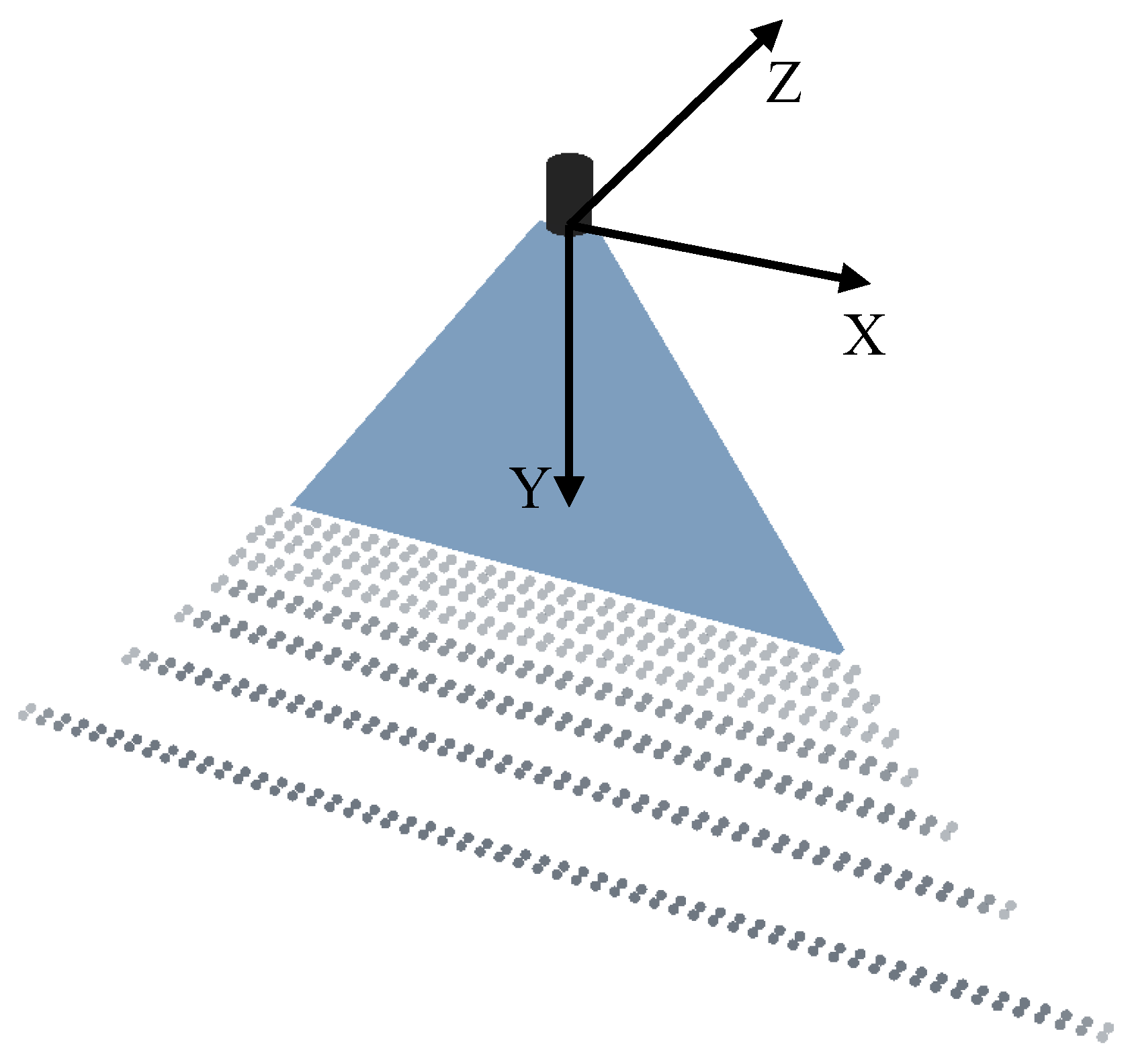
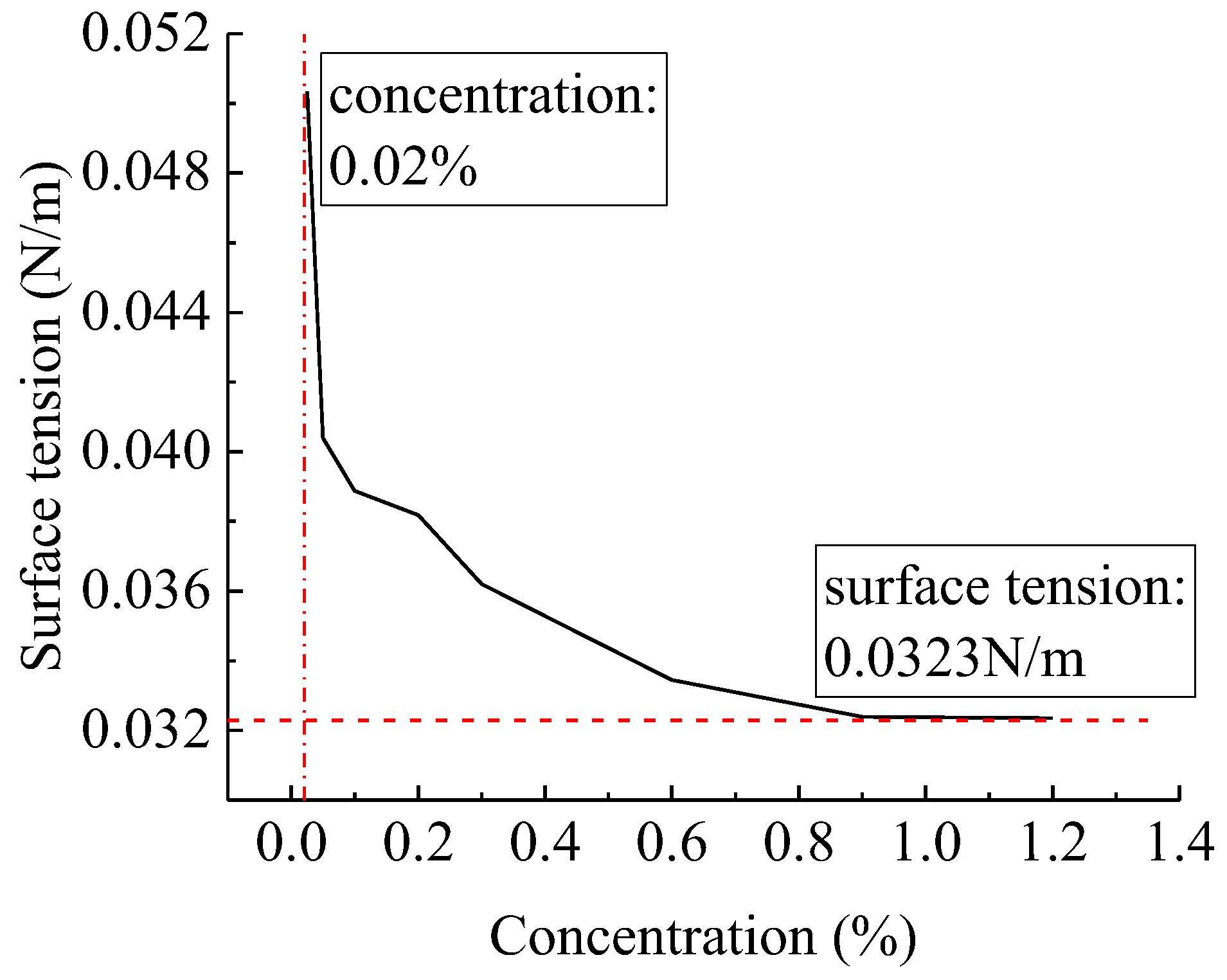
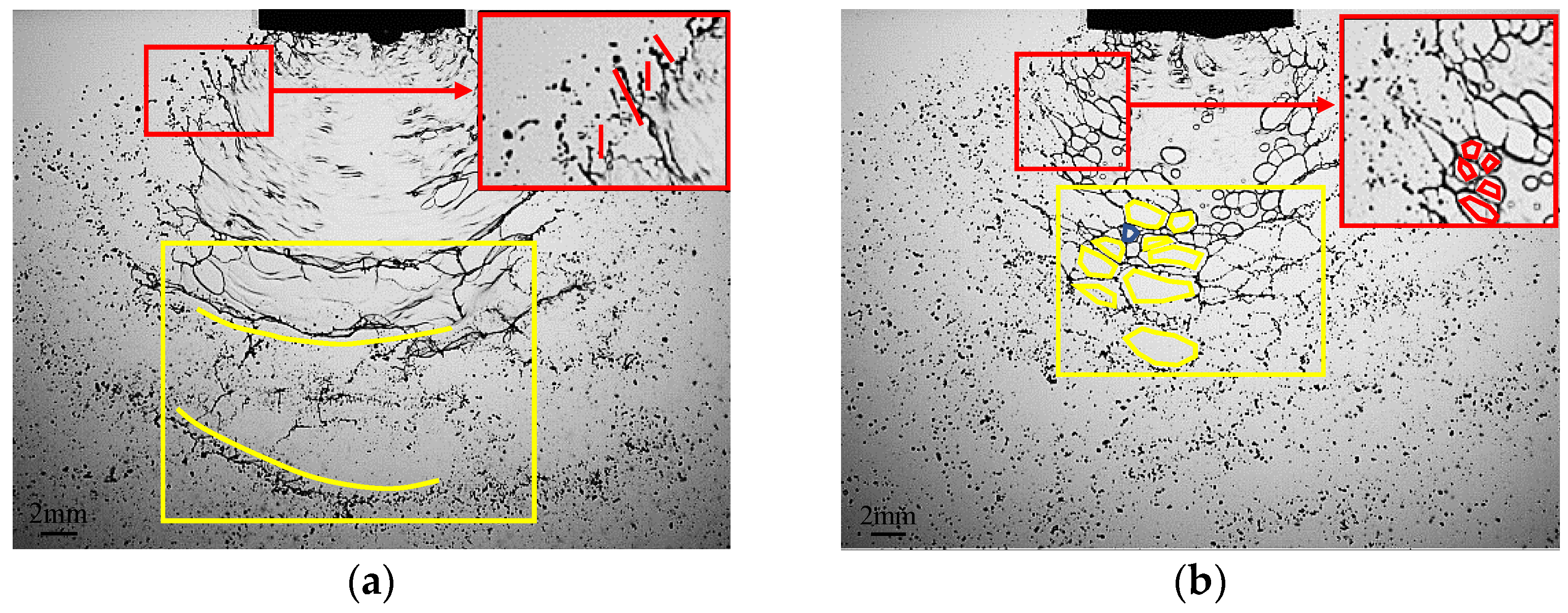
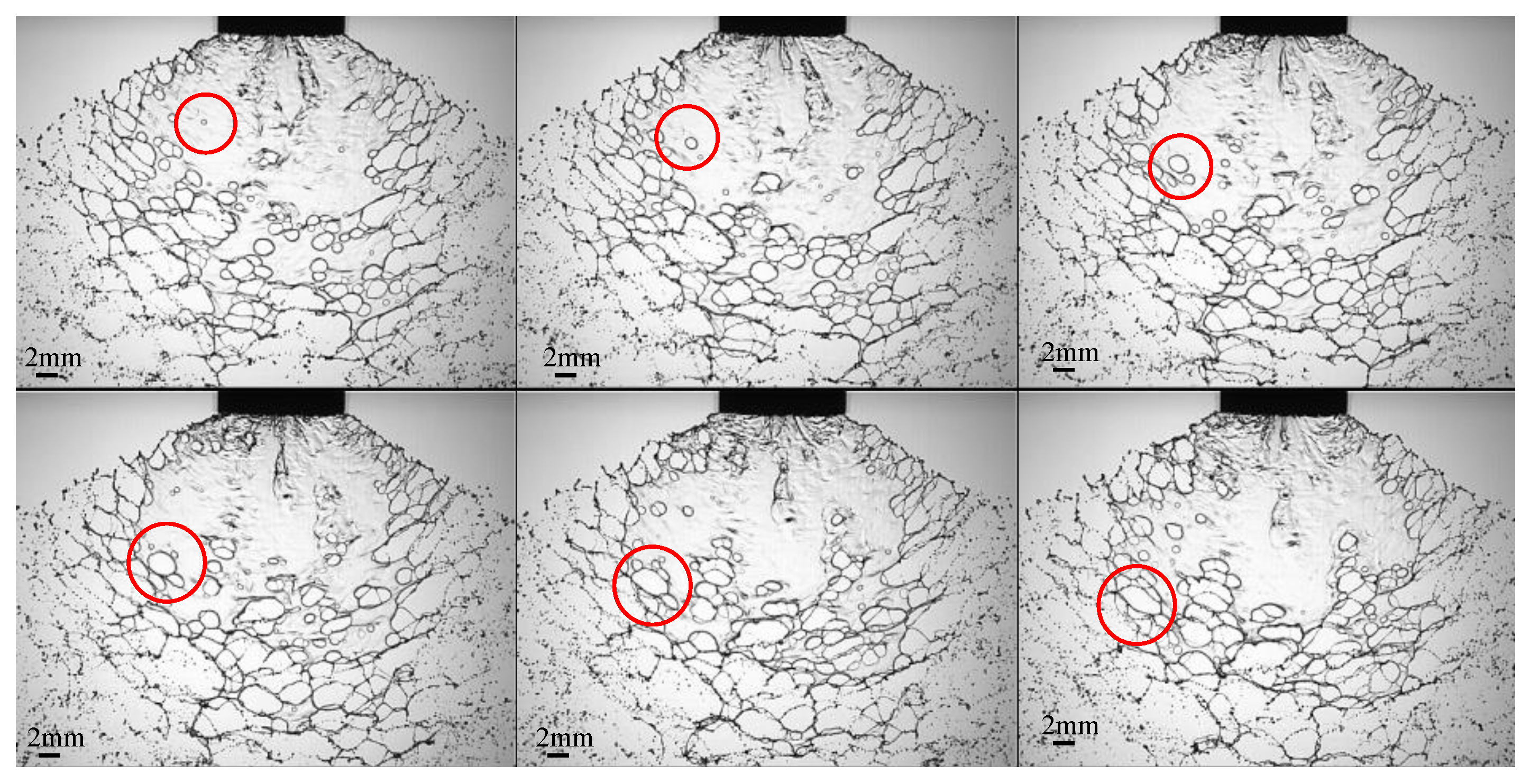


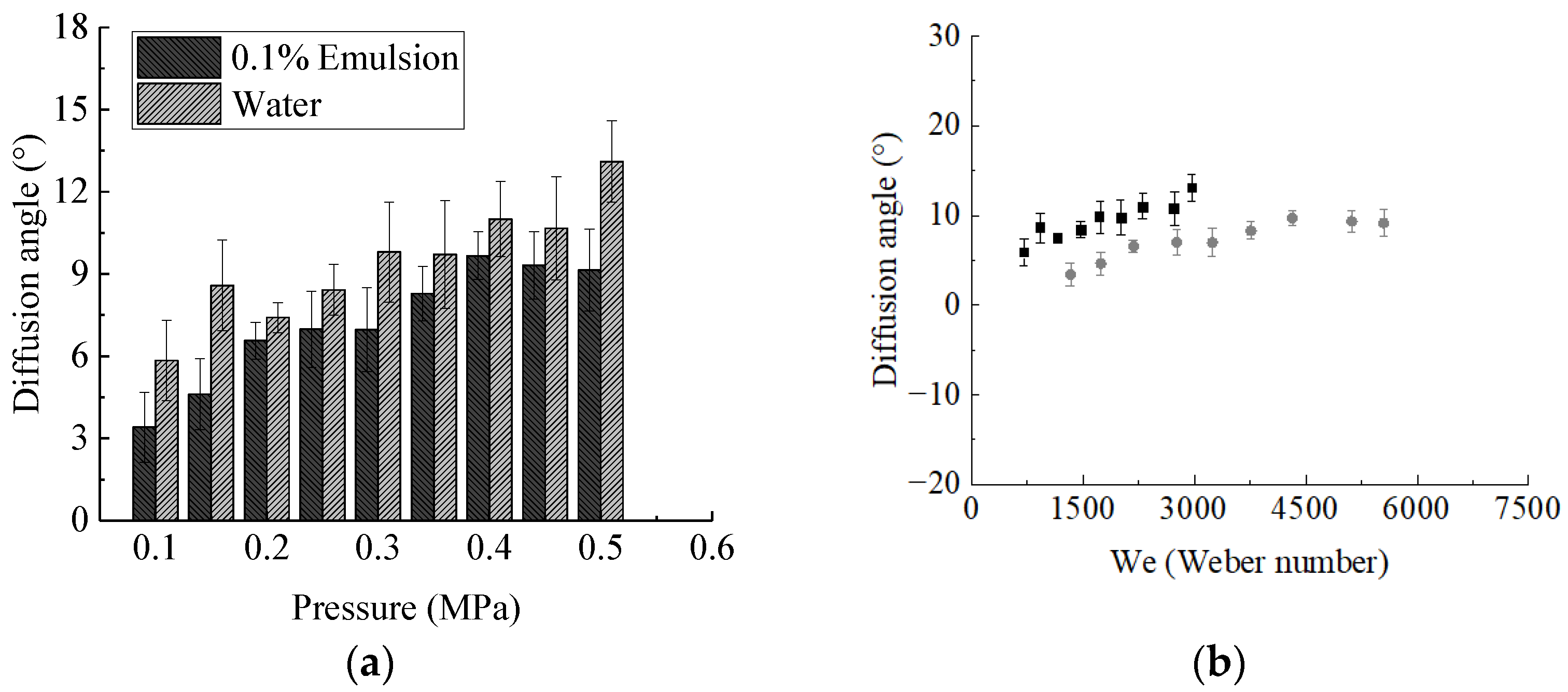
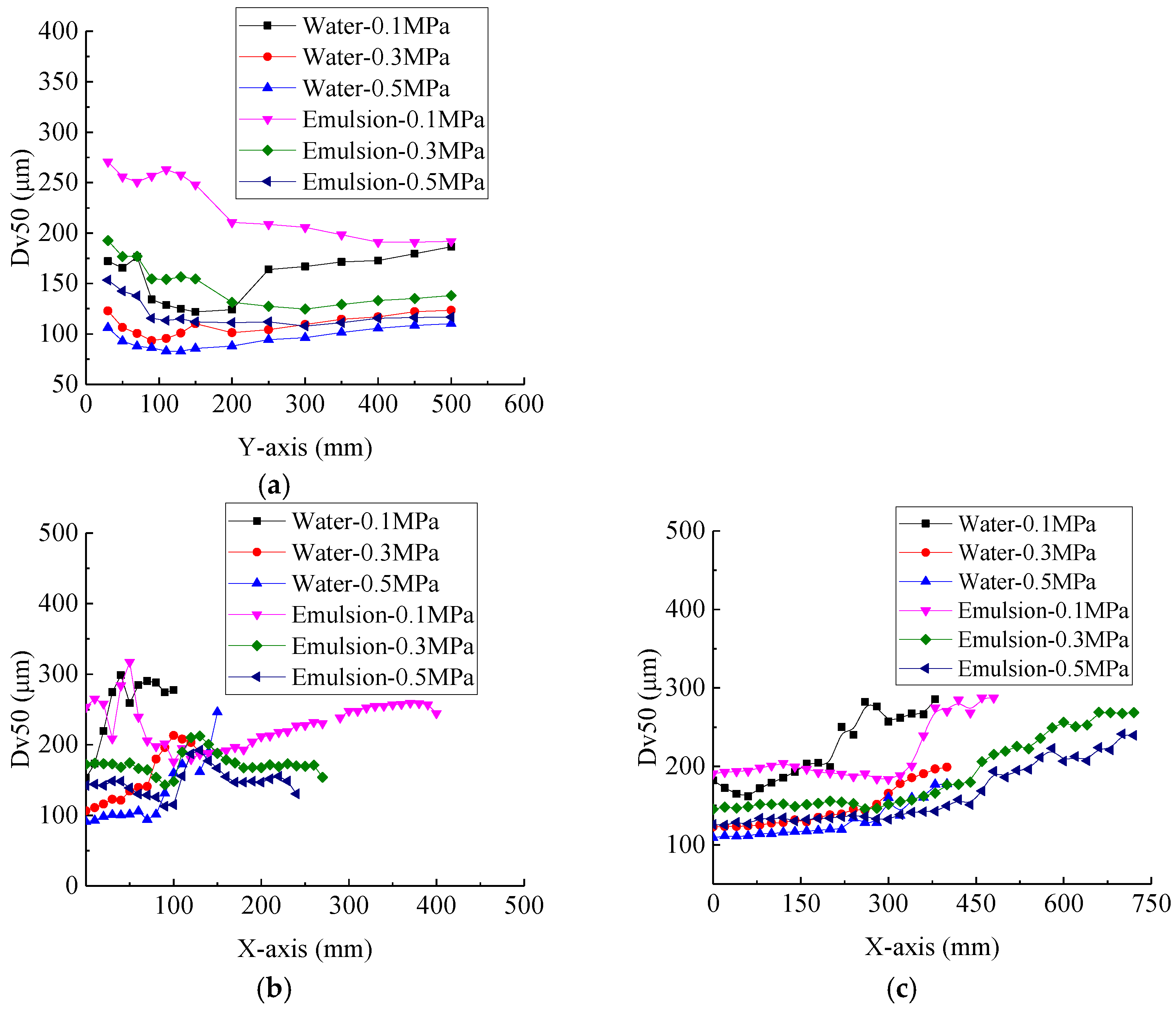
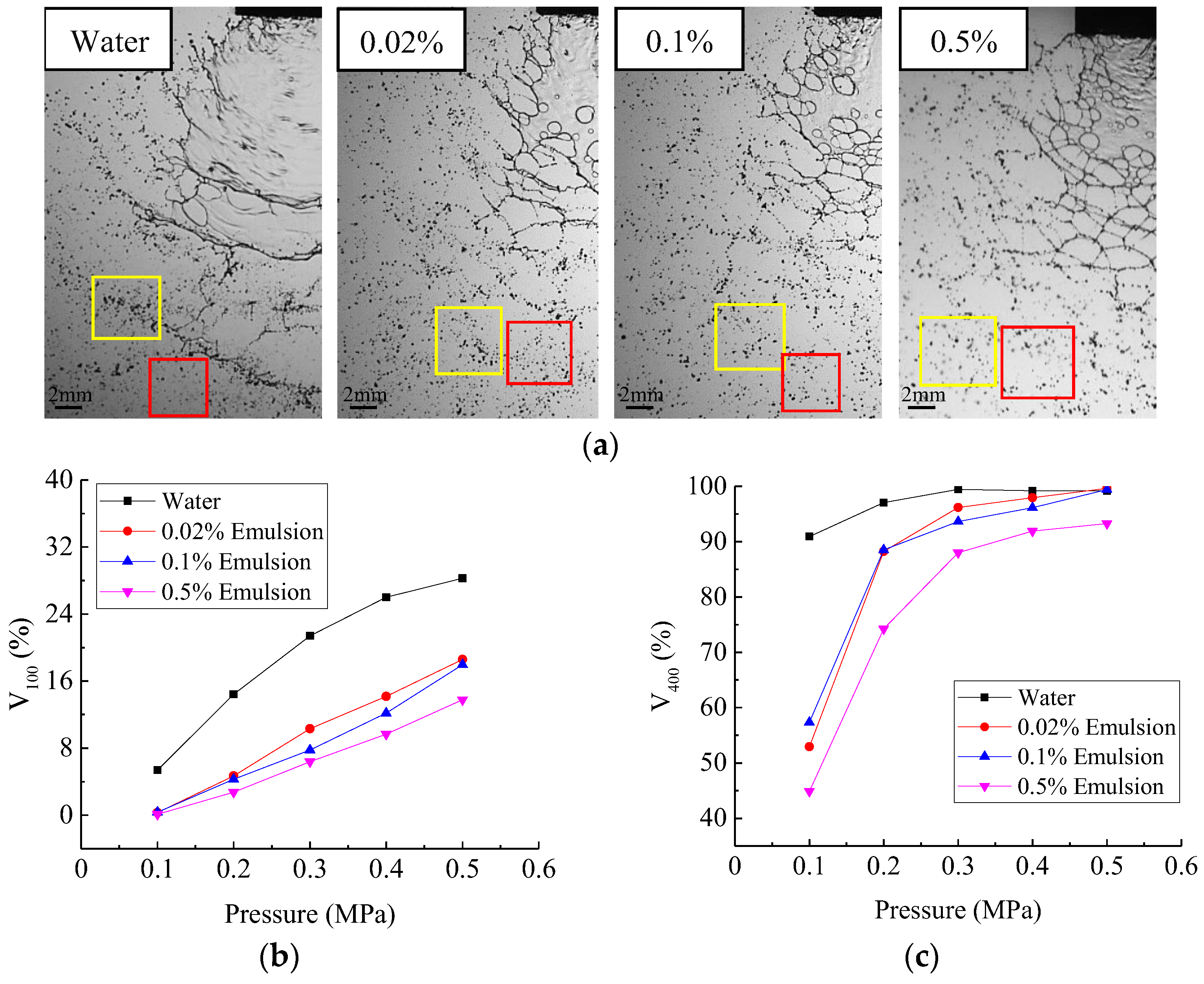
Publisher’s Note: MDPI stays neutral with regard to jurisdictional claims in published maps and institutional affiliations. |
© 2022 by the authors. Licensee MDPI, Basel, Switzerland. This article is an open access article distributed under the terms and conditions of the Creative Commons Attribution (CC BY) license (https://creativecommons.org/licenses/by/4.0/).
Share and Cite
Yang, W.; Jia, W.; Ou, M.; Zhong, W.; Jiang, L.; Wang, X. Effect of Physical Properties of an Emulsion Pesticide on the Atomisation Process and the Spatial Distribution of Droplet Size. Agriculture 2022, 12, 949. https://doi.org/10.3390/agriculture12070949
Yang W, Jia W, Ou M, Zhong W, Jiang L, Wang X. Effect of Physical Properties of an Emulsion Pesticide on the Atomisation Process and the Spatial Distribution of Droplet Size. Agriculture. 2022; 12(7):949. https://doi.org/10.3390/agriculture12070949
Chicago/Turabian StyleYang, Wanting, Weidong Jia, Mingxiong Ou, Wei Zhong, Li Jiang, and Xiaowen Wang. 2022. "Effect of Physical Properties of an Emulsion Pesticide on the Atomisation Process and the Spatial Distribution of Droplet Size" Agriculture 12, no. 7: 949. https://doi.org/10.3390/agriculture12070949




